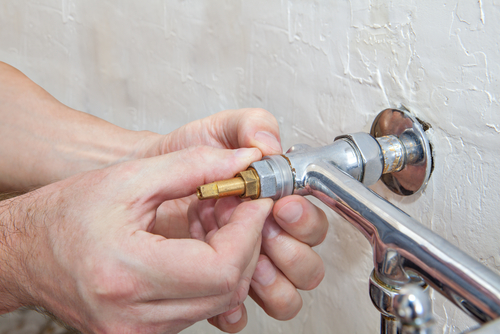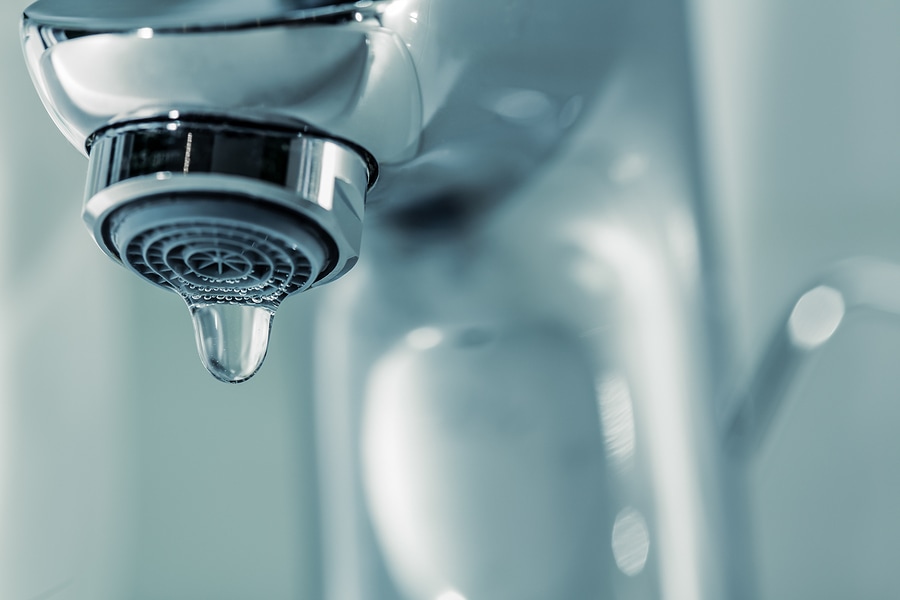We've come across this post about Should I Repair or Replace a Leaky Faucet? below on the internet and figured it made good sense to share it with you on my blog.

Leaking faucets might appear like a small inconvenience, yet their impact exceeds simply the inconvenience of the sound. From wasting water to incurring unneeded economic expenses and health risks, neglecting a leaking faucet can bring about different consequences. In this write-up, we'll delve into why it's essential to resolve this common home concern without delay and effectively.
Wastefulness of Water
Environmental Influence
Leaking faucets add significantly to water wastage. According to the Environmental Protection Agency (EPA), a single tap trickling at one drip per second can waste more than 3,000 gallons of water annually. This not only strains water resources but also affects ecological communities and wild animals depending on them.
Step-by-Step Guide to Repairing a Dripping Faucet
Devices Needed
Before trying to repair a dripping tap, collect the required devices, consisting of a flexible wrench, screwdrivers, substitute parts (such as washing machines or cartridges), and plumber's tape.
Usual Tap Issues and Their Solutions
Identify the type of tap and the certain problem creating the drip. Usual troubles consist of worn-out washing machines, rusty shutoff seats, or malfunctioning O-rings. Refer to producer instructions or on the internet tutorials for step-by-step advice on repair services.
Financial Expenses
Enhanced Water Bills
Beyond the environmental impact, dripping faucets can blow up water costs considerably. The gathered wastage gradually translates right into greater utility expenses, which might have been avoided with timely repair services.
Potential Residential Property Damages
In addition, long term leaking can lead to damage to components and surface areas bordering the faucet. Water buildup can cause staining, deterioration, and even structural issues if left ignored, leading to added repair service prices.
Health Issues
Mold And Mildew and Mildew Growth
The constant presence of moisture from a dripping faucet produces a suitable setting for mold and mildew and mildew growth. These fungi not just endanger interior air high quality yet additionally pose health and wellness dangers, especially for people with breathing conditions or allergic reactions.
Waterborne Illness
Stagnant water in dripping faucets can become a breeding place for microorganisms and other virus, enhancing the threat of waterborne conditions. Contaminants such as Legionella microorganisms prosper in stationary water, potentially causing serious diseases when ingested or inhaled.
Do it yourself vs. Specialist Repair work
Advantages and disadvantages of DIY Repair Service
While some might try to repair a trickling tap themselves, do it yourself repair services include their very own set of obstacles. Without proper understanding and devices, do it yourself efforts can aggravate the issue or lead to incomplete repairs, prolonging the issue.
Benefits of Employing an Expert Plumber
Employing an expert plumber makes sure that the underlying reason for the dripping tap is addressed effectively. Plumbers possess the experience and devices to diagnose and fix tap issues efficiently, conserving time and minimizing the threat of more damages.
Ecological Duty
Private Payment to Conservation
Taking responsibility for repairing leaking taps straightens with wider efforts toward water conservation and environmental sustainability. Every person's actions collectively make a substantial influence on preserving valuable resources.
Sustainable Living Practices
By focusing on prompt repair services and adopting water-saving practices, people contribute to lasting living techniques that benefit both existing and future generations.
Safety nets
Regular Upkeep Tips
To prevent trickling taps, carry out routine upkeep such as cleaning up aerators, checking for leaks, and changing worn-out parts quickly. Additionally, think about setting up water-saving gadgets or upgrading to extra effective fixtures.
Significance of Prompt Repair Works
Addressing dripping taps as quickly as they're discovered prevents further water wastage and potential damage, inevitably conserving both water and cash over time.
Influence On Residential Property Value
Perception of Well-Maintained Property
Maintaining a residential property in good condition, including attending to maintenance issues like dripping faucets, boosts its perceived value and worth among potential customers or occupants.
Impact on Resale Worth
Properties with properly maintained plumbing fixtures, consisting of faucets, command higher resale values in the property market. Resolving leaking taps can contribute to a positive impact during residential property assessments and settlements.
Final thought
Addressing a dripping tap exceeds mere benefit; it's a crucial action towards saving water, decreasing economic costs, and securing health and property. Whether through DIY repair work or specialist assistance, doing something about it to repair trickling taps is a little yet impactful way to advertise liable stewardship of sources and contribute to a much healthier, extra sustainable future.
How to Fix a Dripping or Leaky Faucet
A leaking faucet is one of the most common problems that homeowners encounter, but it being commonplace doesn’t make it any less annoying. The constant drip drip drip of a leaking bathtub faucet, showerhead, or sink tap can disturb your home’s serenity. Left neglected, a dripping faucet can also result in higher water bills and discoloration or mold growth in your sink or plumbing fixtures.
Fortunately, you don’t have to be a trained plumber to know how to stop a dripping faucet. With some basic tools, replacement parts, and a little patience, leaky faucet repair is a breeze. In this article, we’ll explain what causes dripping faucets and how you can fix them.
What Causes a Leaking Faucet?
Kitchen and bathroom faucets come in all manner of designs, but most involve some combination of valves, O-rings, seals, and washers. The O-ring is usually the weakest link, but any one of these pieces can wear down over time. Heat, moisture, temperature fluctuations, minerals, mold, and movement can contribute to warping and corrosion, breaking the watertight seal. This just comes with the territory of being a homeowner. Everything is always subject to wear and tear, and some component parts of your appliances and fixtures need to be replaced on occasion. At least replacement O-rings are cheap!
More rarely, dripping faucets can be a symptom of excessively high water pressure. Were this the case in your home, you would probably notice that the leak is not isolated to one faucet. Water pressure issues are harder to resolve on your own. We recommend contacting a professional plumber if you suspect your water pressure is too high.
How to Fix a Dripping Faucet
Pipe wrench or monkey wrench Allen wrench set Screwdrivers Old towel or rag Shut off the water.
Before you do anything, you need to turn off the water to keep from drenching your kitchen or bathroom. You should find a valve under the sink and against the wall. Once you’ve turned this valve, try turning the faucet on to confirm that the water source has been cut off.
If you can’t locate your local valve for the faucet you’re working on, you can always shut off the water to the house at the main valve. Of course, this will prohibit anyone from using the sinks, showers, or toilets while you’re working on the faucet that’s giving you trouble.
Plug or block the drain.
You’ll be disassembling the faucet and removing some small bits of hardware. Plug the drain with a stopper or rag to avoid the possibility of a small screw falling into your P-trap.
Take apart the faucet assembly.
There are several varieties of kitchen and bathroom faucets, each with its own manner of assembly. For detailed instructions on how to disassemble your faucet, you can refer to the fixture’s manual or contact the manufacturer. If you know whether you have a ball, disc, cartridge, or compression faucet, you can find detailed schematics online.
In general, you need to begin by removing the faucet handles. You might notice a small screw that you’ll need to remove with a screwdriver or Allen wrench. If you don’t see any visible securing hardware, it’s likely hidden under a decorative cap that can be unscrewed or popped off with flathead screwdriver.
Remove each piece methodically, consulting a schematic when necessary. Take notes or arrange the pieces in such a way to make it easier to correctly reassemble the faucet later.
Remove the cartridge.
Once you’ve removed the handles and securing hardware, you should be able to remove the valve cartridge or stem. Some cartridges will slide right out. Other faucet models will require you to loosen a nut with a pipe wrench before you can remove the valve stem.
Examine the exposed hardware.
With the cartridge or stem removed, inspect the component parts. Check the rubber O-rings for wear and tear. Also examine the seat washer for corrosion or other damage. These pieces are usually the responsible parties for a dripping faucet, but it’s worth inspecting the other component parts while you have the faucet disassembled.
Find replacement parts.
Once you’ve identified which faucet component has failed, find an identical replacement. Your local hardware store should have O-rings, seat washers, and other standard components in stock. If you have a luxury or uncommon faucet, you may have to contact the manufacturer for a replacement part.
It’s a good idea to take your old parts with you to the hardware store so you can compare them with the store’s inventory and be sure you’re purchasing the correct replacement.
Reassemble the faucet.
With your new parts in hand, reconstruct the faucet and handles. Don’t be tempted to overtighten screws or nuts. You might think this could create a better seal, but it can instead damage or bend a delicate part of the assembly and create a new problem for you.
Turn on the water and test the faucet.
The only thing left to do is test your work. Unplug the sink, turn the water back on, and try the faucet. Congratulate yourself on a job well done!
https://www.libertyhomeguard.com/how-to-fix-a-dripping-or-leaky-faucet/

As a keen person who reads about 4 Common Reasons for a Leaky Faucet, I assumed sharing that short article was a good thing. Loved our review? Please share it. Help other people find it. Many thanks for your time invested reading it.